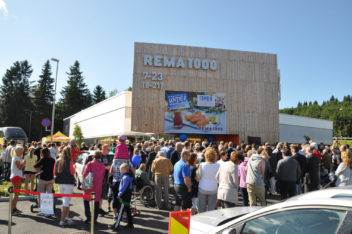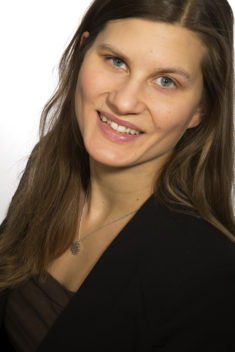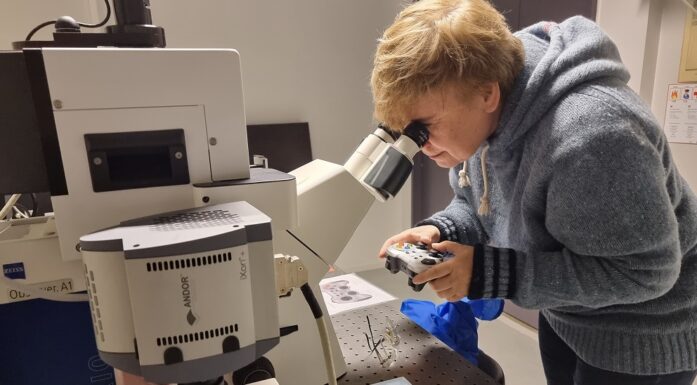Our cities are hidden power stations
Waste heat and locally-produced renewable energy can be generated by compact, “urban power plants” that are efficient enough to supply heat to entire housing estates.
By supplying surplus heat, facilities such as freezers and IT server rooms can be transformed into compact “urban power plants”. This energy, in the form of waste heat, can be distributed via so-called low-temperature district heating grids, also known as “fourth generation district heating”. Such systems are currently being introduced as part of new housing projects.

At this supermarket in Trondheim, Norway, surplus heat generated by the refrigeration system is being stored temporarily in water tanks. The heat is then returned to the store via the ventilation and underfloor heating systems – when it is needed. Photo: SINTEF.
This is good news for both the environment and energy consumption.
Great faith in district heating
The reason for this faith in fourth generation district heating is linked, among other things, to the results that SINTEF has achieved following modelling studies of local heating grids installed in new housing projects. The strategy is that heat will be supplied from local sources of waste heat such as retail outlets, buildings and IT server rooms, as well as from renewable sources such as solar power and heat pumps – and often in combination with thermal storage. Outstanding heat requirements will be met by the primary district heating grid.
“The results from our modelling studies demonstrate that by installing a low-temperature district heating grid, it is possible to reduce heat losses by a third”, explains SINTEF researcher Hanne Kauko.

Hanne Kauko from SINTEF is looking into how locally-generated waste heat can be used to heat homes. Photo: SINTEF/Gry Karin Stimo.
Moreover, this approach opens the possibility of reducing our reliance on peak load sources in the primary district heating grid, which often depend on fossil fuels. Consequently, this will lead to a reduction in greenhouse gas emissions. A local heating grid, incorporating thermal storage, also provides an opportunity for interfacing with the existing electricity grid with the aim, among other things, of reducing output peaks from that source.
Kauko also points out that the term “district heating” is really rather misleading.
“In these local heating grids, the sources of heat are in fact very close at hand, so, in Norway the sector is introducing a new term for such systems – urban energy.
Multiple benefits
The results from this project, carried out in collaboration with Statkraft Varme and called “Development of Smart Thermal Grids” (DSTG), are not unique.
“Other studies carried out in Denmark demonstrate that the potential is even greater”, says Kauko. “The Danes claim that it’s possible to achieve heat loss reductions of between 50 and 75 per cent”, she says.
There are at least three benefits to be had from the use of lower temperature heat distribution systems:
- Greater opportunity to utilise waste heat from low-temperature sources such as supermarkets, IT server rooms, and large interior climate cooling plants, not to mention the so-called “energy plus houses” of the future. This type of waste heat source is more common in urban areas than the large-scale, industrial, high-temperature heat sources that are traditionally used to supply district heating systems.
- Increased generation capacity and enhanced efficiency of renewable heat sources such as solar and heat pumps.
- Lower installation and running costs.
Key to the future
District heating, or urban energy, will play a key role in the future because of the electrification of many aspects of society.
“In the current energy debate, much of the discussion centres around electricity even though half of our energy requirements are actually linked to heating and cooling”, says Kauko. “The increased use of urban energy systems will provide more opportunities to transfer load from the electricity grid, thus freeing up more electricity for other purposes such as transport”, she says.
A low-temperature heat distribution grid linked to heat pumps or electric boilers, combined with thermal storage, will also facilitate electricity storage in the form of heat during periods of electricity overproduction from renewable sources. This in turn will boost opportunities for interfacing between the heating and electrical distribution grids.
“We will see greater flexibility throughout the total energy system”, says Kauko.
Tailored to new-build projects
Kauko believes that housing developers absolutely should be considering low-temperature urban energy systems when planning future projects.
“New buildings in particular are very well suited to low-temperature urban energy systems because they exhibit lower levels of heat loss than older buildings, and are often fitted with underfloor heating that is ideal for heat distribution at lower temperatures”, says Kauko. “Today, heat is distributed in urban energy grids at temperatures of about 100 degrees, but modern buildings simply don’t require heat to be supplied at temperatures as high as this”, she says.
SINTEF project: Utvikling av smarte termiske nett (Development of Smart Thermal Grids)
NTNU blog: Åpner miljøvennlig kjølelab (Opening an environmentally-friendly refrigeration lab)





